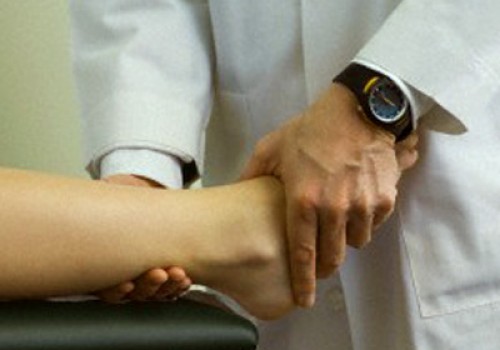Broken Ankle
During the past 30 years, doctors have noted an increase in the number and severity of broken ankles, due in part to an active, older population of “baby boomers”, according to the American Academy of Orthopedic Surgeons.
Any one of the three bones that make up the ankle joint could break as the result of a fall, an automobile accident or some other trauma to the ankle. A broken ankle may also cause damage to the ligaments. Because a severe sprain can often mask the symptoms of a broken ankle, every injury to the ankle should be examined.
Symptoms of a broken ankle include:
- Bruising
- Deformity, particularly if there is a dislocation as well as a fracture
- Immediate and severe pain
- Inability to put any weight on the injured foot
- Swelling
- Tender to the touch
Treatment options include a leg cast or brace if the fracture is stable. If the ligaments are also torn, or if the fracture created a loose fragment of bone that could irritate the joint, surgery may be required to “fix” the bones together so they will heal properly.
Osteochondritis (stiff ankle)
These are lesions that usually cause pain and stiffness of the ankle joint and affect all age groups. Often, osteochondritis follows a twisting type injury to the ankle.
Osteochondritis may cause swelling and ankle pain. When immobilization of the injury doesn’t alleviate the problem, surgery is sometimes prescribed. The procedures usually involve removing the loose fragment of cartilage and bone from the ankle joint and placing small drill holes in the defect. The drill holes stimulate new blood vessels to fill the area and help form scar tissue to fill the defect.
Shin Splints
Shin splints are pain to either side of the leg bone, caused by muscle or tendon inflammation. They are commonly related to a collapsing arch, but may be related to a muscle imbalance between opposing muscle groups in the leg.
Proper stretching and corrective shoes or shoe inserts for pronation can help prevent shin splints.
Sports Injuries
Martial arts and kick boxing
A variety of injuries can occur as a result of martial arts and kick boxing. These include plantar fasciitis, Achilles tendinitis, sesamoiditis, and ankle sprains. Stretching is recommended for a minimum of 15 minutes before performing any kicking or punching.
Aerobics
Proper shoes are crucial to successful, injury-free aerobics. Shoes should provide sufficient cushioning and shock absorption to compensate for pressure on the foot which is many times greater than walking. The shoes must also have good medial-lateral stability. Impact forces from aerobics can reach up to six times the force of gravity, which is transmitted to each of the 26 bones in the foot.
Team Sports
Activities such as football, basketball, soccer, field hockey and lacrosse often lead to ankle and big toe joint injuries as a result of play on artificial surfaces.
Turf Toe
Big toe injuries also called “turf toe,” often result from hyperextension of the big toe joint as the heel is raised off the ground. An external force is placed on the great toe and the soft tissue structures that support the big toe on the top are torn or ruptured.
Symptoms include pain, tenderness and swelling of the toe joint. Often there is a sudden acute onset of pain during the push-off phase of running. Usually, the pain is not enough to keep the athlete from physical activities or finishing a game. This causes further injury to the big toe and will dramatically increase the healing time.
Treatment includes rest, ice, compression, and equipment modification or change. Non-steroidal anti-inflammatory drugs (NSAIDs) may be used for relief of minor pain as well as to decrease the inflammation of the injury. Consult your physician before taking any medication.

